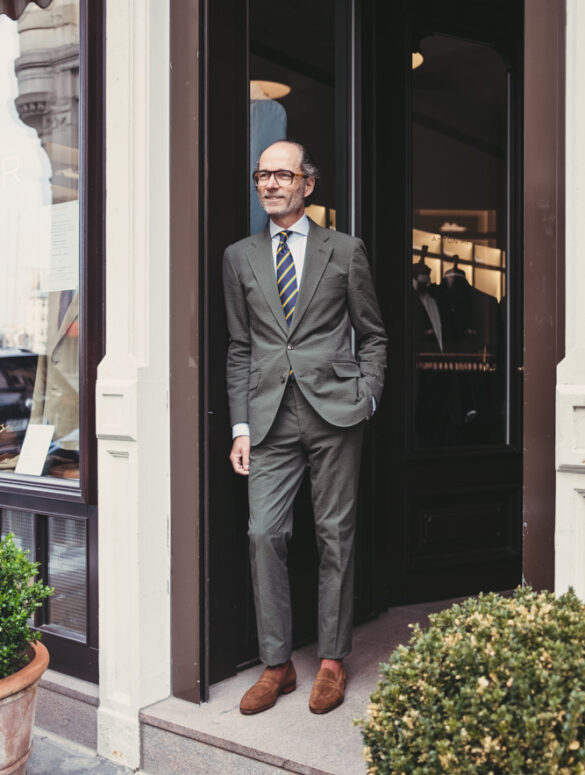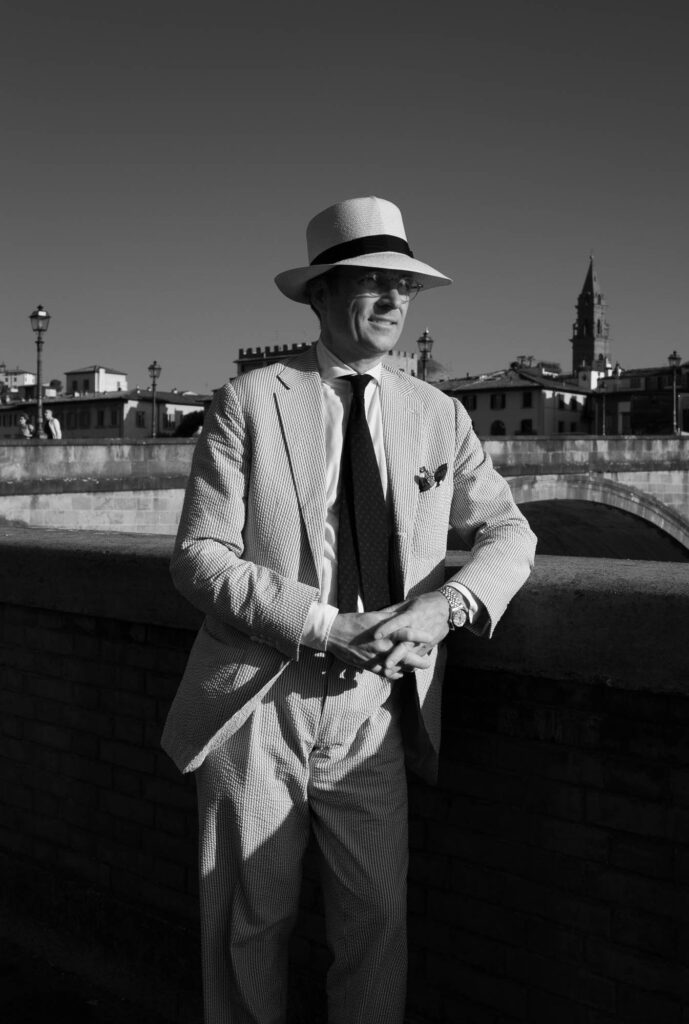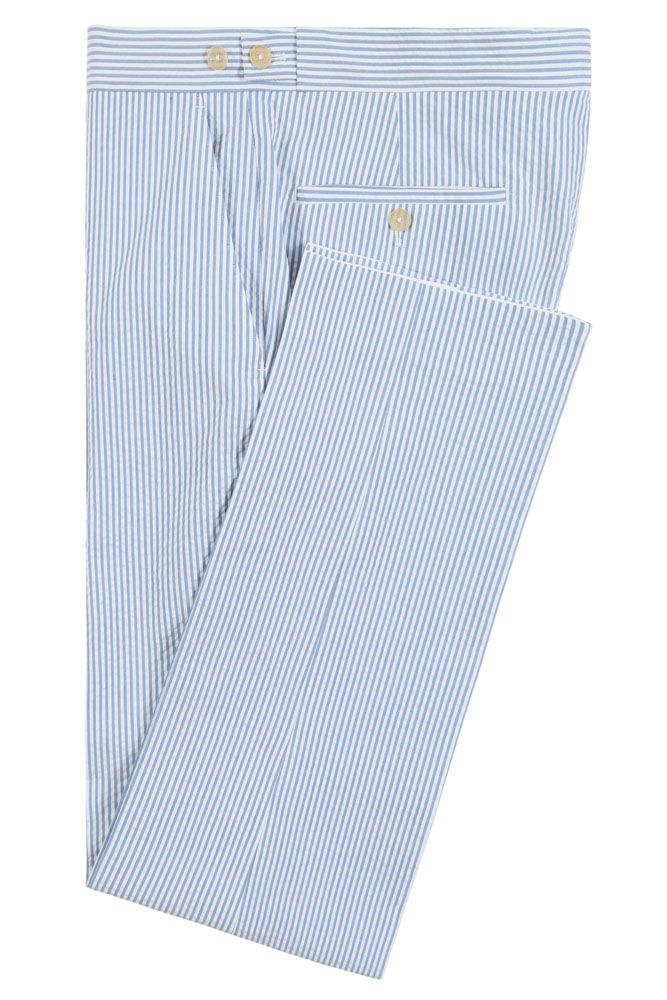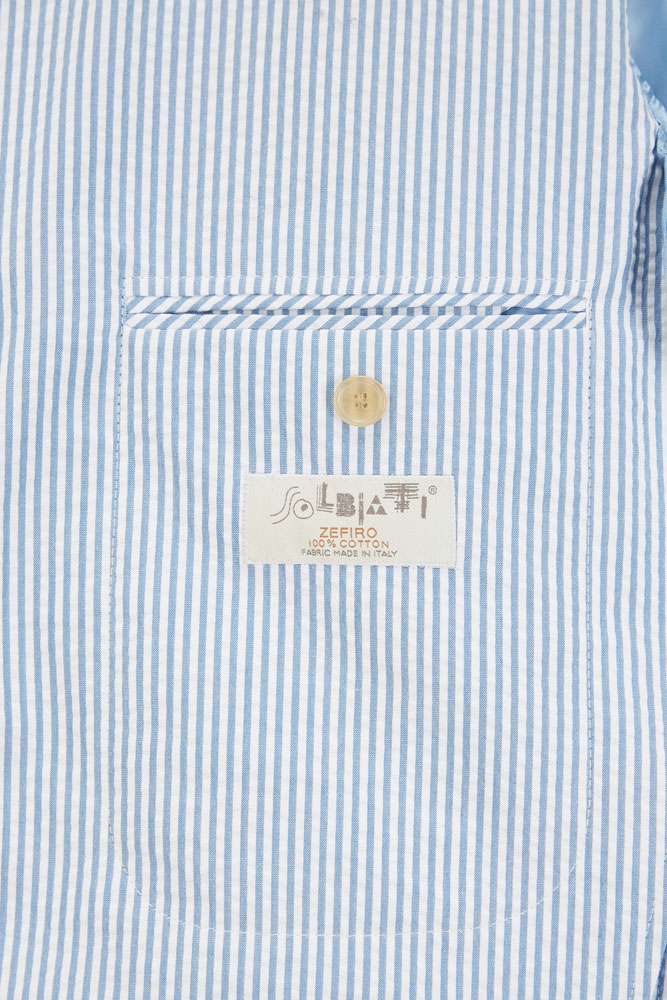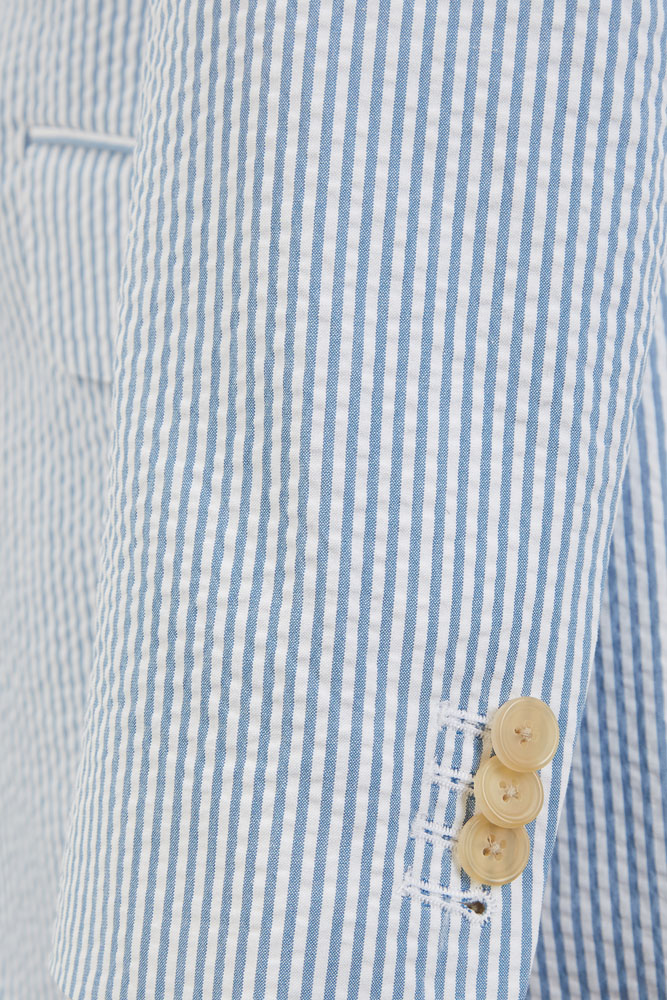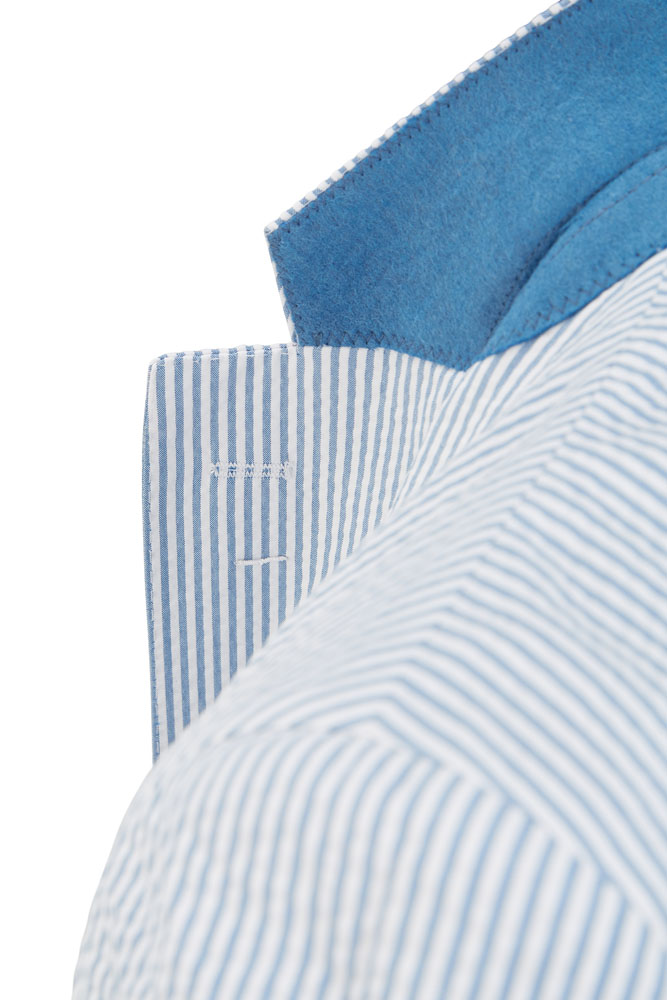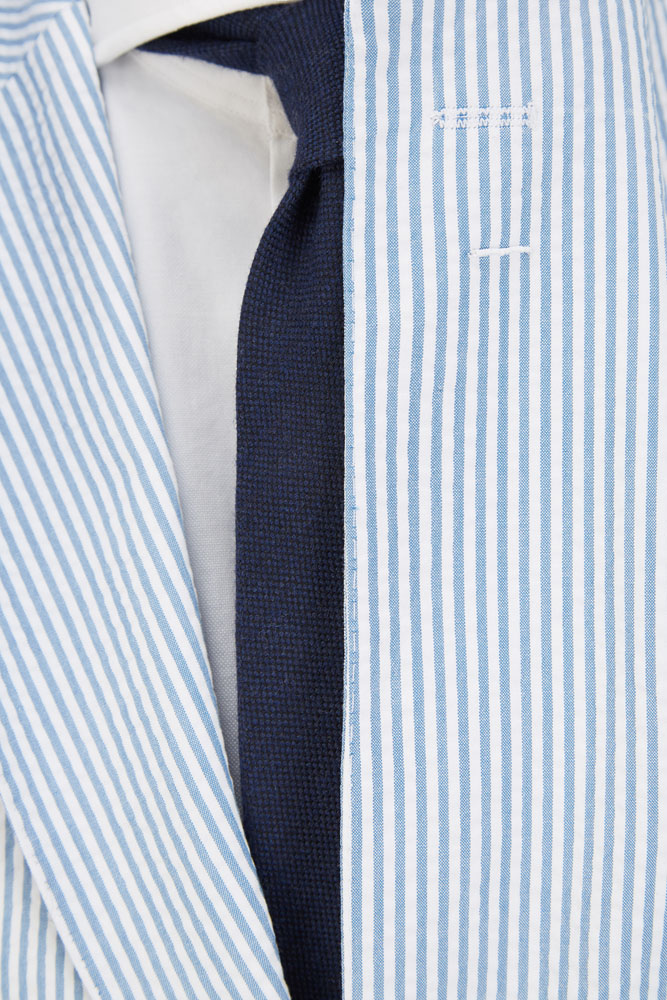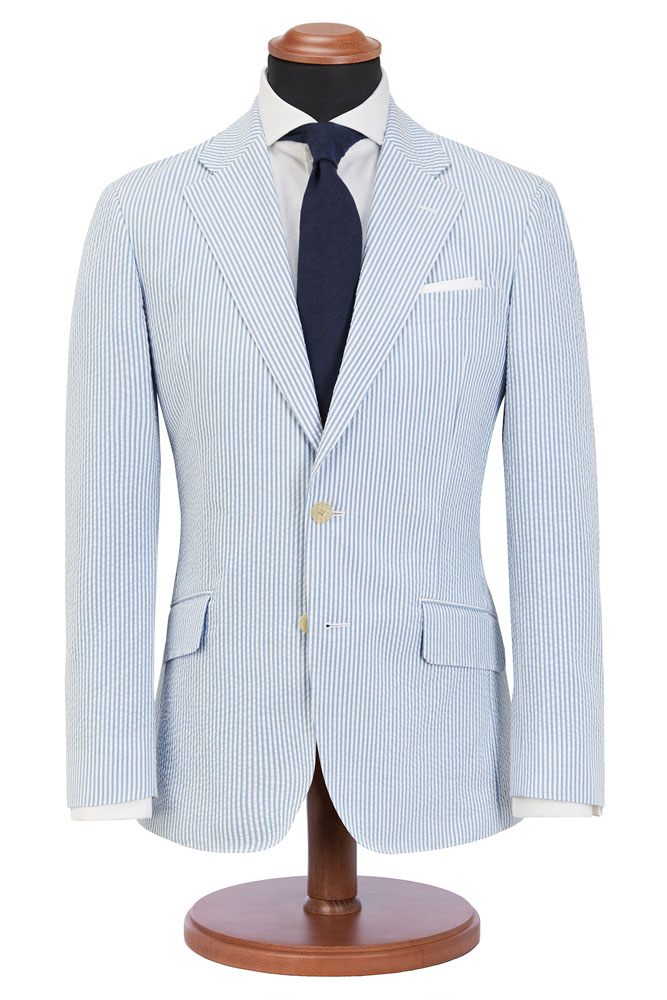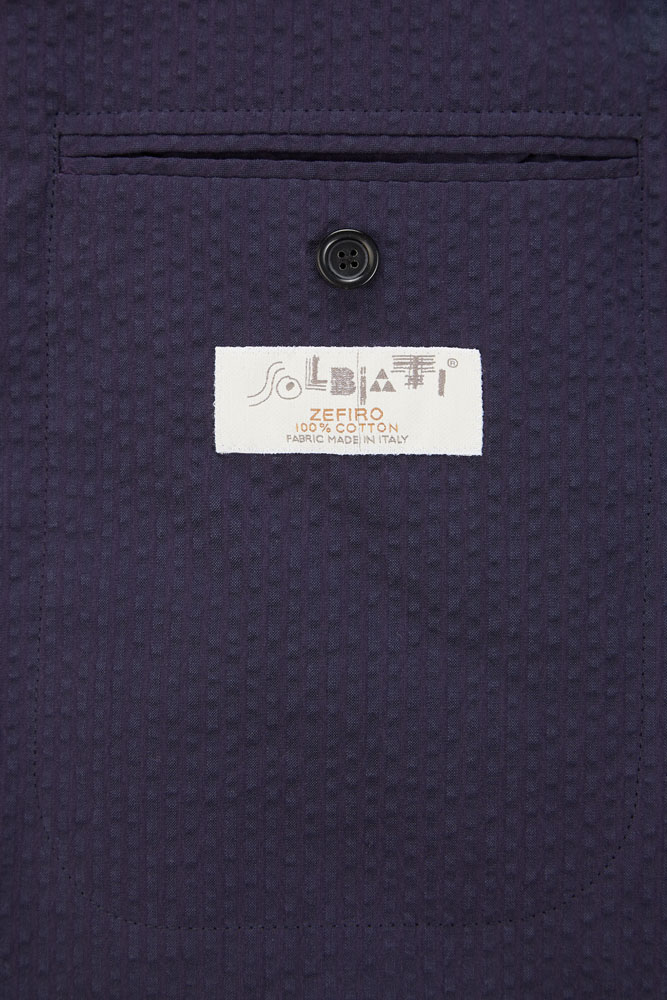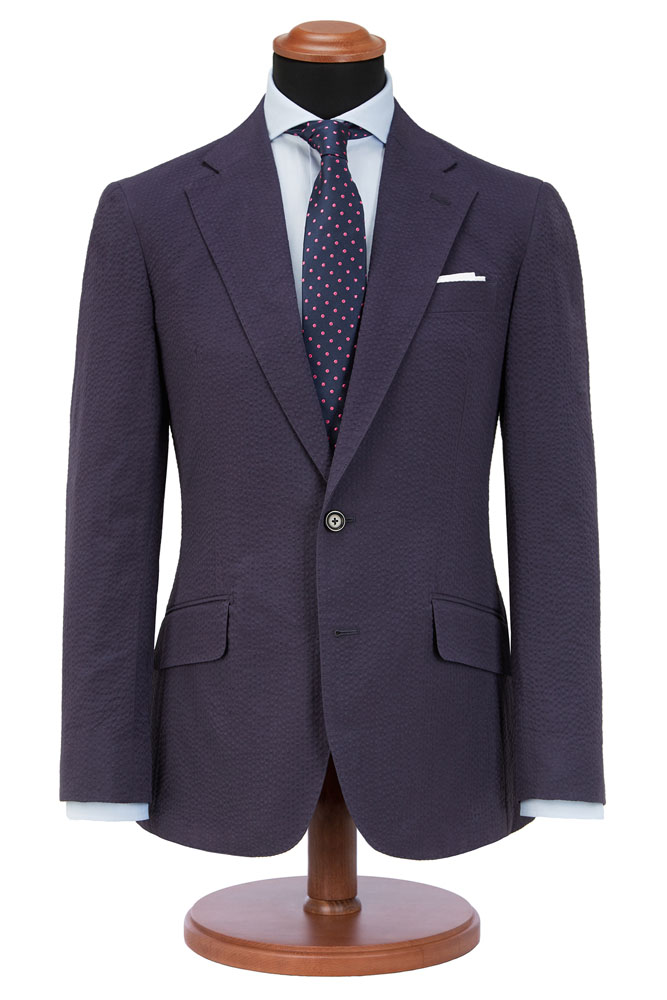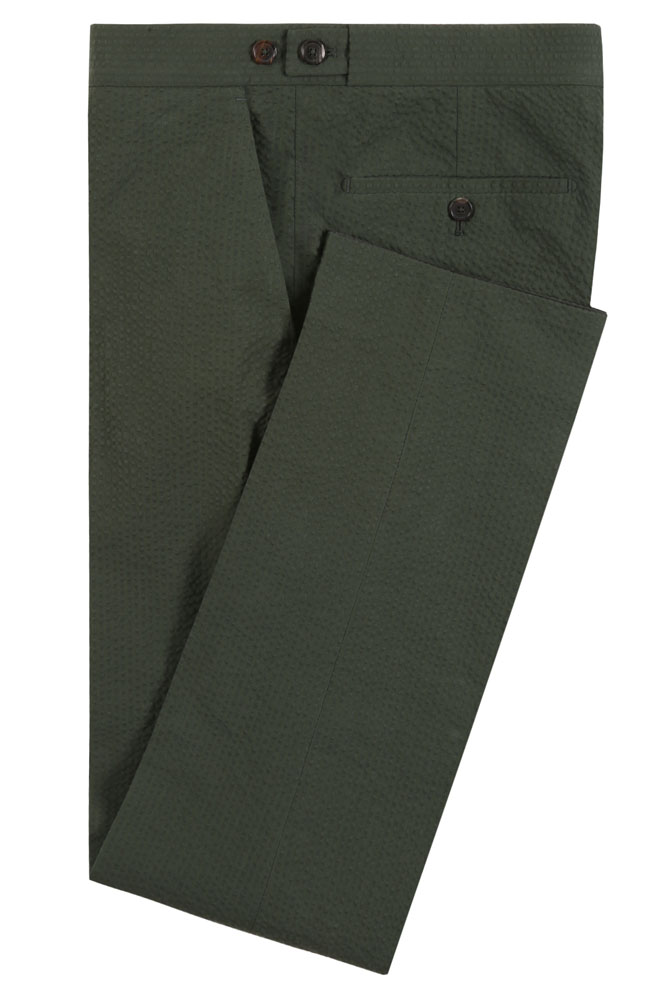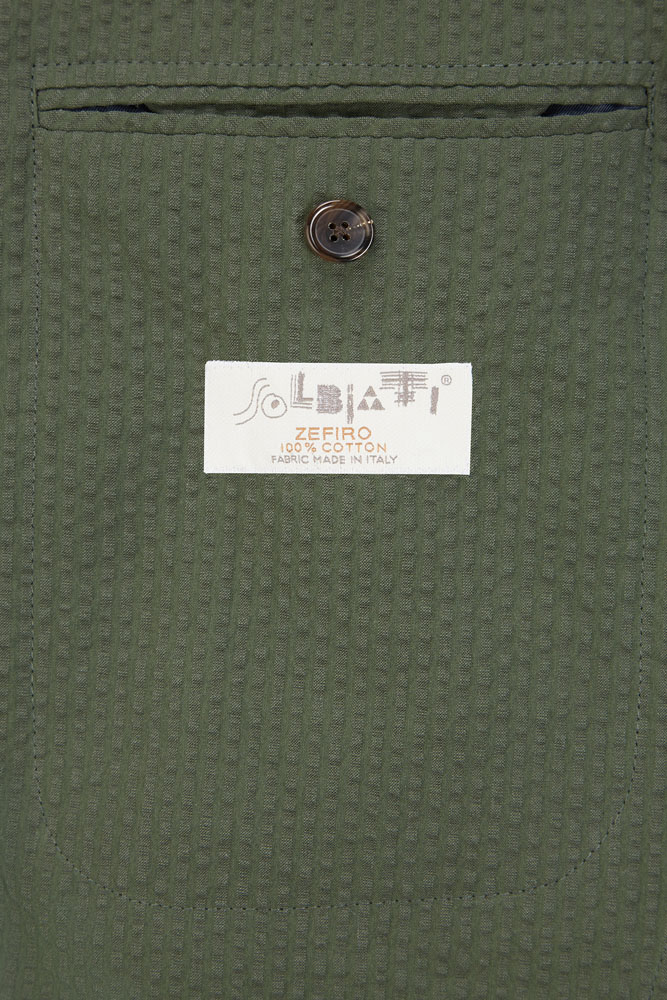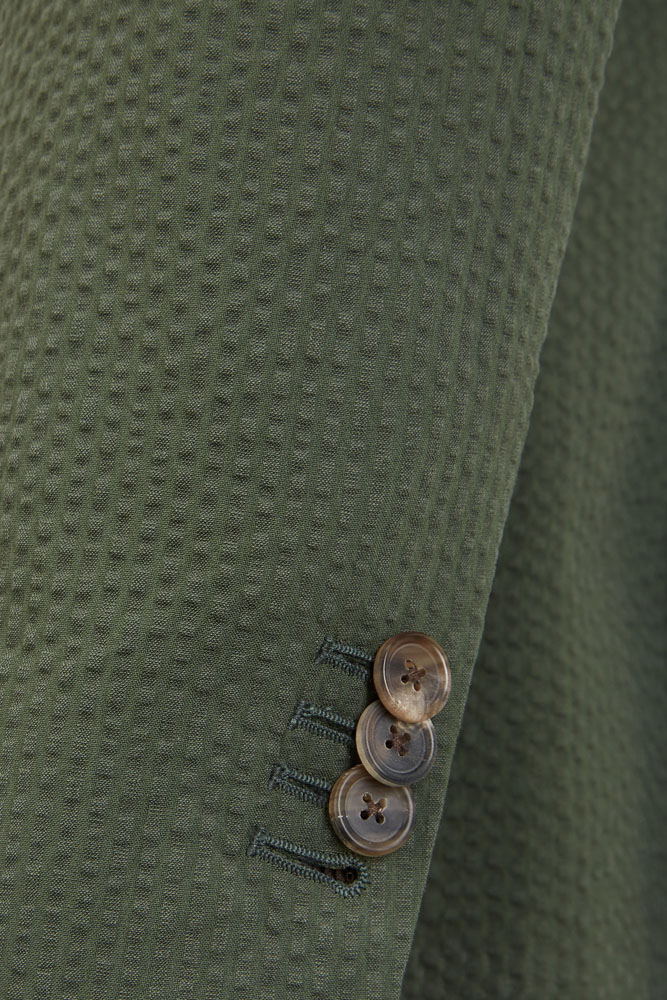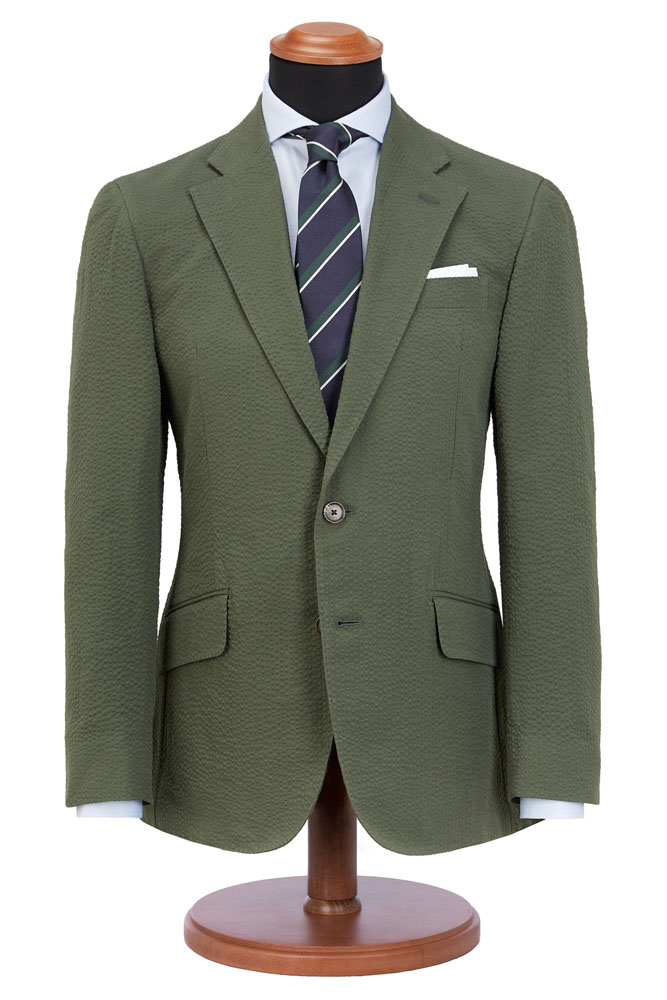I had my first hands-on experience with seersucker jackets and suits in the late 1980s in German second hand stores. Judging by the cut they were usually made in the 70s or 80s and usually bore labels of famous or lesser known American brands. With a bit of luck one could find something from Brooks Bros., J. Press or Haspel. Seersucker jackets were easier to find than complete suits. In those days it was virtually impossible to buy seersucker suits in European shops, second hand was the only option outside of travelling to the USA or buying by mail-order at the few retailers that shipped outside of the US.
Most people will probably think of narrow blue and white stripes when they hear seersucker but the puckered surface is the more distinctive quality of the fabric as it can be woven in any colour. The puckered fabric has two advantages. Due to the weaving process seersucker cloth is never entirely smooth which has the great advantage of creating tiny pockets of air. These have a cooling effect. This is best felt on the legs when the trousers are unlined and the fabric is in direct contact with the skin. The puckered surface makes the inevitable creases of daily wear less noticeable which is the second advantage. Even freshly pressed seersucker never looks like a cotton gabardine, so one doesn’t have to worry about wrinkling. Cotton seersucker has always been an affordable fabric in the US because cotton is widely available. Italian weavers have tried to change the slightly cheap image of the fabric by launching luxurious seersucker fabrics made of Cashmere, fine wool or mixes of cotton and silk or Cashmere. Cotton seersucker is the more authentic choice in my opinion. Cashmere seersucker reminds of cashmere denim which I find equally idiosyncratic.
The secondhand seersucker jackets or suits that I found in the 1980s were rarely made of 100 percent cotton, usually they were poly blends or even 100 percent synthetic. These fabrics were popular in the 60s and 70s for everyday wear in the hot and humid American south. Suits made of them were often washable, which was very convenient for the travelling salesman who could wash his suit in the bathtub of his hotelroom, let it dry overnight and wear a fresh suit the next day.
When I visited New York City in 1999 the legendary fabric store Beckenstein’s was one of the places recommended to me by my local contacts. Neal Boyarsky, the late owner of the shop, gave me three suit length’s of cotton seersucker as a souvenir. I had two made-to-measure suits made up with the cloth, a single-breasted suit from Belvest and double-breasted suit from the now defunct German maker Regent in Bavaria. When I wore these suits in those days people usually found them pretty odd, even people working in the menswear business raised their eyebrows. Nowadays seersucker suits are still not very popular but you can spot more than ever before in Europe.
The main reason why seersucker is still not the first choice when men are looking for cotton summer suits are the typical stripes. The narrow white and light blue stripes are difficult to match and they cannot be worn with any of the light blue shirts (plain or patterned) that form the basis of most men’s business wardrobe. The typical seersucker fabric looks best with a white or a pink shirt, which limits the possibilities a lot. The new trend towards seersucker in easy-to-match solid colours like dark blue or green might give seersucker a push in popularity. Dark blue and green seersucker suits (like the ones we found in the collection of Anton Meyer) can be worn with all dress shirts that look good with typical business suitings and the absence of stripes allows us to wear shirts in every type of pattern. My personal favourite is the green seersucker suit because it is the more sophisticated choice compared to dark blue. The jacket and trousers work well worn separately, the jacket looks very good with chinos, jeans or dark grey fresco trousers.
